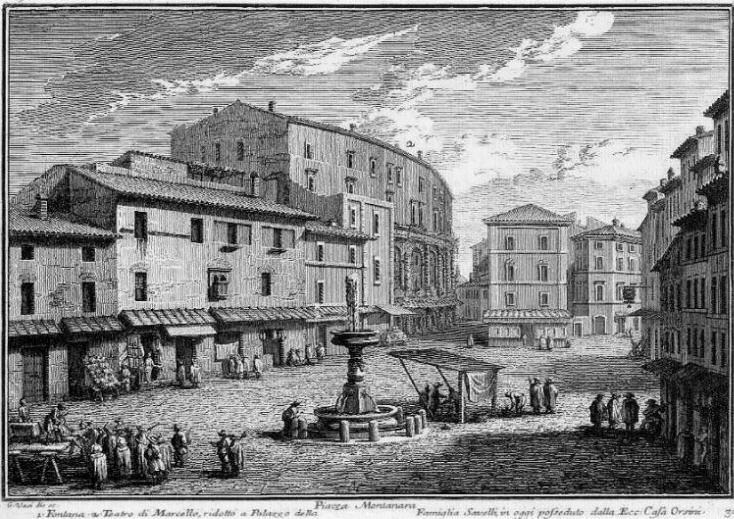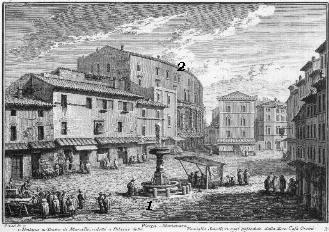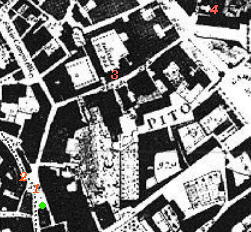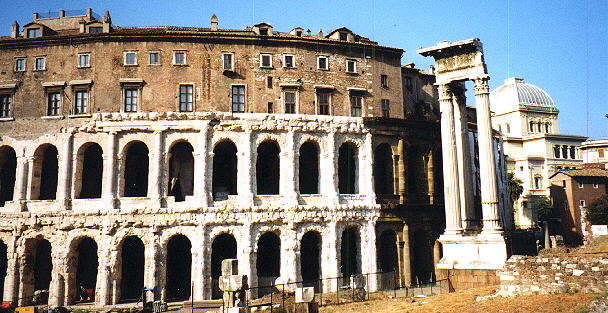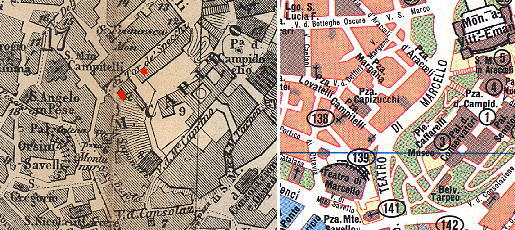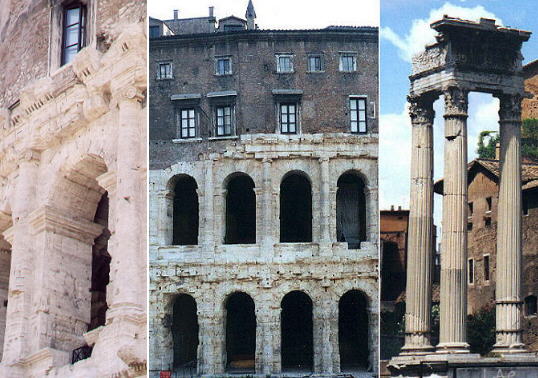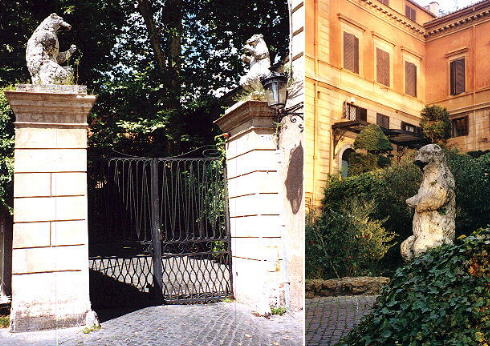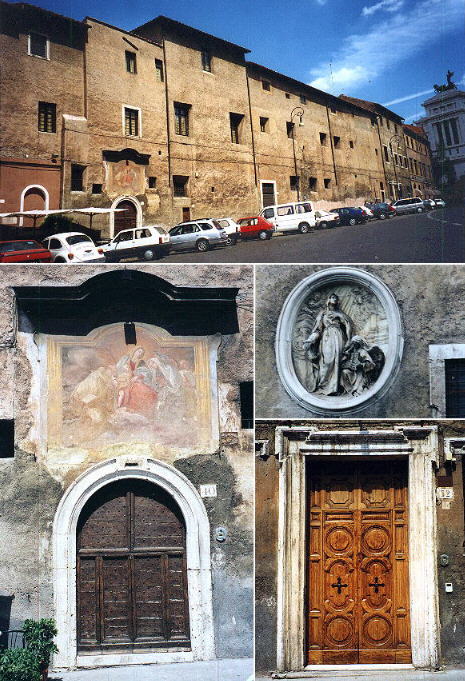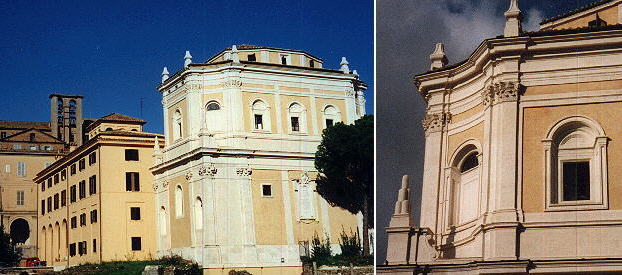  Piazza Montanara (Book 2) (Map C3) (Day 5) (View C9) (Rione Campitelli) and (Rione Sant'Angelo) In this page:
Piazza Montanara owes its name (Montanara=of the mountains) to the
peasants from the mountains near Rome, who congregated here for their shopping
after visiting the nearby cattle market (Campo Vaccino
i. e. the Roman Forum). The view is taken from the green dot in the map below. In the description below the plate Vasi made reference to: 1) the fountain; 2) Teatro di Marcello (Palazzo Savelli/Orsini). The small 1748 map shows also 3) Monastero di Tor de' Specchi; 4) S. Rita da Cascia.
The dotted line in the small map delineates the border between Rione Sant'Angelo (lower left quarter) and Rione Campitelli.
The medieval area between the Capitol and the Tiber was subject in the 1930s to large changes aimed at isolating the Roman ruins and at providing the center of Rome with a large road leading towards the southern suburbs (so called Via del Mare, because it led to Porta S. Paolo and from there to Ostia) as you can see by comparing the two maps below (the old one shows in red the location of the lost churches of S. Andrea in Vincis and SS. Orsola e Caterina). The picture shows the square dome of the XIXth century synagogue built on the site of the old Ghetto. The fountain of Piazza Montanara was relocated opposite Palazzo Lancellotti.
Teatro di Marcello or Palazzo Orsini
The theatre was built by Augustus and dedicated to his nephew Marcellus. It had three rows of arches adorned with columns of the three Greek orders, like the Colosseum and like the Colosseum became a fortress in the Middle Ages. It was then transformed into a Palace for the Savelli and later for the Orsini. Three columns of the Temple of Apollus have been re-erected. The inner part of the palace has the look of a XIXth century building and the garden occupies the area of the cavea of the theatre. At the entrance and in the garden the bears of the Orsini (orso=bear) watch over possible intruders.
The only medieval building which was spared is the severe Monastero di Tor de' Specchi, founded by S. Francesca Romana in 1425. The nuns who live here make vows of seclusion. The thick walls and the small windows protect them from the temptations of modern life. On March 9, the day devoted to S. Francesca Romana, the nunnery is open to the public. The door to the left leads to the older part of the building where early Renaissance frescoes show the saint tempted by Evil. The door to the right leads to the Baroque Cappella del Coro.
This little church was located near the steps leading to S.
Maria in Aracoeli and was rebuilt in 1940 between Teatro di Marcello
and Monastero di Tor de' Specchi. It was designed by Carlo Fontana for
Alexander VII, whose mountains are clearly visible at the corners of the
church.
Next plate in Book 2: Campo Vaccino Next step in Day 5 itinerary Chiesa di S. Nicolò in Carcere Next step in your tour of Rione Campitelli: S. Maria d'Aracoeli Next step in your tour of Rione Sant'Angelo: Piazza Giudia
Go
to |
